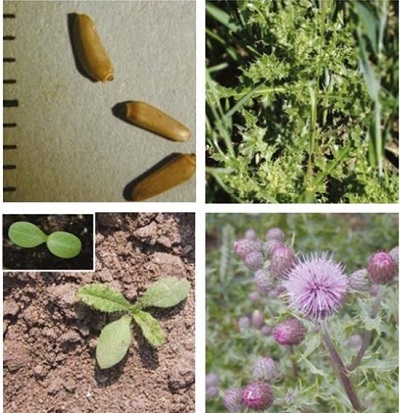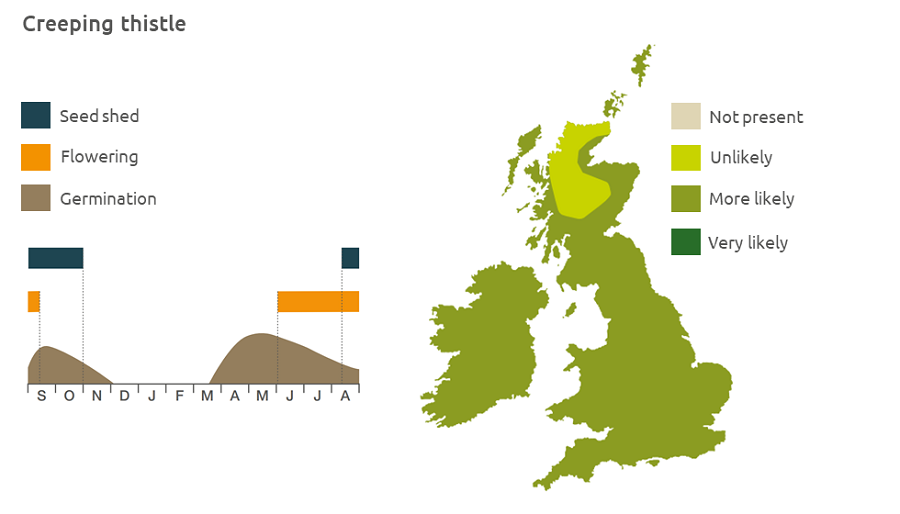- Home
- Knowledge library
- Distribution and biology of creeping thistle in the UK
Distribution and biology of creeping thistle in the UK
Creeping thistle is one of the most troublesome weeds of arable land and is particularly competitive in oilseed rape and spring crops. Find out how to identify and control it.
Overview
Creeping thistle (Cirsium arvense) is one of the most troublesome weeds of arable land. Dense patches can interfere with cereal harvest and can be even more of a problem in potatoes and sugar beet. The plant dies back in winter while seeds are still retained in the seed head. The separate sexes need to be within a few hundred metres for seeds to be fertile, although some plants may be self-fertile. Only about 3% of the seed is viable. Plants regenerate aggressively from the extensive system of branched, lateral roots, each of which may give rise to new shoots, resulting in the formation of large clonal patches which can expand at the rate of 6 m per year.
- It is particularly competitive in winter oilseed rape and spring crops
- It has value to biodiversity
Description
It is a perennial vigorous dicotyledon, with extensive creeping rhizomes. Plants grow up to 150cm tall, often in extensive clumps.
Key features
Plant: In the field plants group close together. The stems are unwinged and shiny and the flower stalks have many small flowerheads.
Lookalikes
Creeping thistle may be confused with spear thistle; the young plants of thistles are often difficult to tell apart. Creeping thistle is less likely to set fertile seed than other thistles. There are few marginal spines on creeping thistle. The large second leaf of spear thistle is densely hairy.

Location and life cycle

Geographic distribution
Creeping thistle is found almost everywhere in Britain, on cultivated land or overgrazed pastures.
Soil type
It prefers loams rich in nitrogen and other nutrients, which are slightly damp, and is an indicator of thin crops.
Seed statistics
- Seed longevity: >5 years
- Germination depth: 5.3 cm
- Seed weight: 1.25 mg
- Seeds/head: 10–100
- Seeds/plant: 4,000–5,000
Management
Creeping thistle is difficult to eradicate because of the extensive root system and because the waxy coating on the leaves reduces herbicide adhesion. It can be controlled by combinations of herbicides, ploughing and crop rotations, but avoid chisel ploughing or cultivations which break up rhizomes as they readily regenerate. It is possible to drag the rhizomes to the surface for desiccation in fallows.
For advice on herbicides, please speak with your agronomist or adviser.
When was this information last updated?
This page is based on content from the encyclopaedia of arable weeds publication. Since it was first released in 2008, the publication has been redesigned several times but not revised. However, it remains a good foundation for general information on the distribution and biology of weeds.

